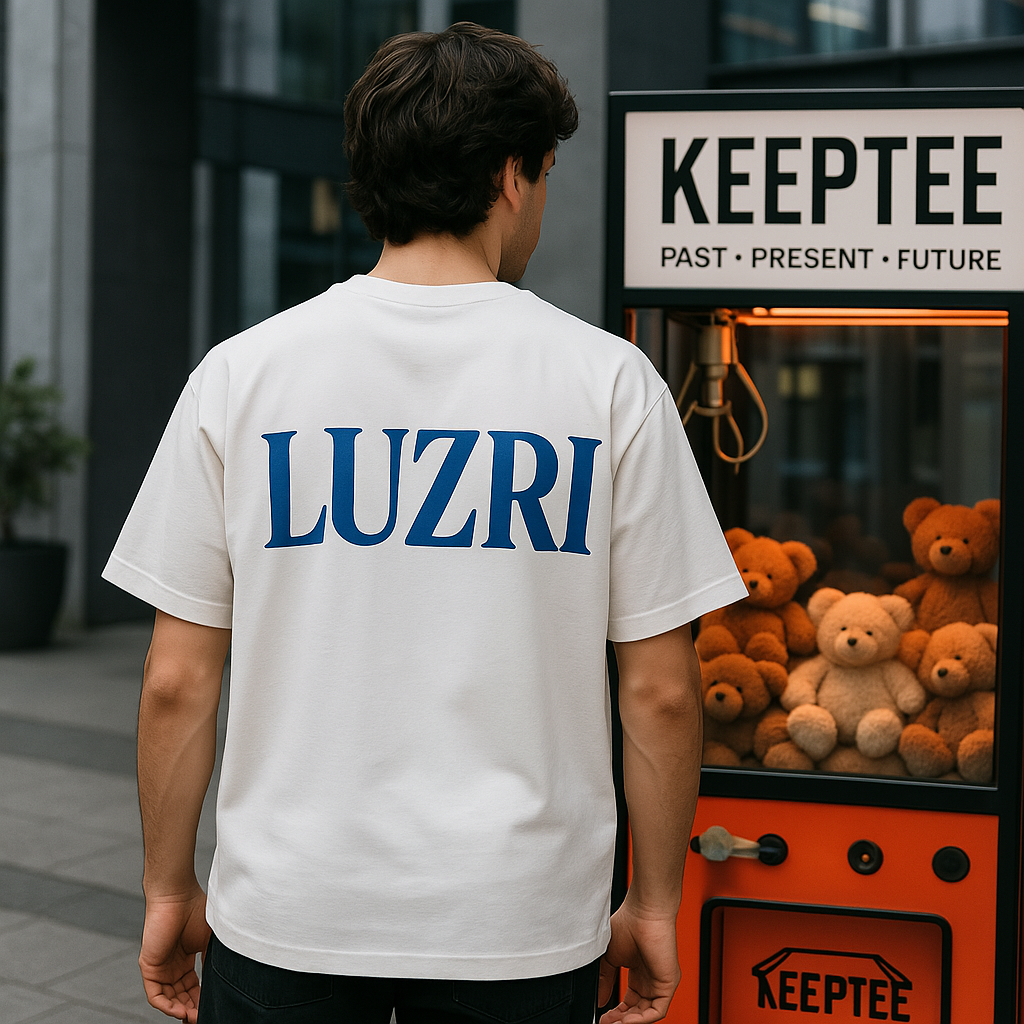
T‑Shirts: More Than a Simple Garment – A Reflection of Style, Society, and Innovation
In today’s fast-paced world where fashion constantly reinvents itself, the T‑shirt remains a steadfast symbol of personal expression, economic dynamics, and cultural evolution. Far more than just a piece of clothing, the T‑shirt stands as a versatile medium that bridges art, technology, and social commentary. This article delves into the multifaceted world of T‑shirts, examining their origins, the socio-economic impact they wield, their role as a canvas for art and activism, and how cutting-edge technology is reshaping this timeless garment.
The Origins: Humble Beginnings and Early Popularity
The history of the T‑shirt is a fascinating narrative of transformation and adaptation. Initially created for functional use, the T‑shirt began its journey as a lightweight, comfortable undershirt worn by laborers and military personnel. During the early 20th century, military uniforms incorporated T‑shirts as practical base layers due to their simplicity and ease of use. Their breathable cotton fabric made them especially suitable for harsh conditions, setting the stage for their eventual transition into mainstream culture.
After the two world wars, the T‑shirt gradually emerged as an item of casual wear. Hollywood’s portrayal of rebellious characters in the 1950s, notably by icons like Marlon Brando and James Dean, catapulted the T‑shirt from the realm of utility to that of style. The rebellious allure and understated coolness of these film stars turned the T‑shirt into a subtle yet powerful symbol of youthful defiance and the emerging culture of casual fashion.
A Canvas for Creativity: The Artistic Evolution of the T‑Shirt
What makes the T‑shirt truly extraordinary is its role as a blank canvas for creative expression. In the decades following its rise to popularity, the garment evolved into an important tool for art and activism. The simplicity of the T‑shirt’s design made it an ideal medium for displaying bold graphics, innovative typography, and striking slogans. From screen-printed masterpieces to hand-painted works, T‑shirts have constantly challenged the limits of wearable art.
Graphic designers and artists found the T‑shirt to be both accessible and provocative. Phrases and images printed on T‑shirts have conveyed everything from political dissent to cultural pride. During the 1960s and 1970s, the civil rights and anti-war movements harnessed the power of T‑shirt slogans to unite and rally people behind their causes. In many ways, T‑shirts became walking billboards—vehicles for social commentary and personal beliefs.
Today, with the advent of digital printing and design software, the artistic potential of the T‑shirt is virtually limitless. Emerging trends such as retro designs, abstract graphics, and meme-inspired prints attest to the ongoing dialogue between technology, art, and everyday style. The democratization of design through online platforms has also empowered individuals to create and share their unique visions without the backing of established fashion houses.
Economic Impact and Market Dynamics
The T‑shirt industry is not merely a story of style; it is also a robust economic sector that touches multiple facets of global commerce. With their low production cost and high appeal, T‑shirts have cultivated a diverse market that includes large-scale manufacturers, boutique labels, and independent online vendors. The accessibility of T‑shirts has lowered the barrier to entry for many small businesses, enabling them to launch creative ventures and niche brands with minimal overhead.
Global Supply Chains and Manufacturing Innovation
The production of T‑shirts is a complex process that highlights the interconnectedness of modern economies. Cotton production, textile processing, printing techniques, and distribution networks come together to create the final product—a garment that reaches millions of consumers worldwide. Traditionally, cotton, prized for its natural breathability and soft texture, has been the fabric of choice. However, concerns over environmental sustainability have led manufacturers to embrace alternative materials and innovative production methods.
Eco-friendly fabrics such as organic cotton, bamboo, and recycled polyester are gaining traction. These alternatives not only minimize environmental impact but also cater to a growing demographic that values ethical and sustainable practices. Advances in production technology, such as automated cutting and robotic stitching, have improved efficiency and quality control. Moreover, digital printing techniques allow for precision in design and reduce waste, making the entire process more environmentally responsible.
T‑Shirts in the World of Branding and Marketing
The simplicity and universal appeal of the T‑shirt have positioned it as a powerful tool in branding and marketing. Over the years, many corporations, sports teams, and even political campaigns have utilized T‑shirts to spread their messages. A cleverly designed T‑shirt can spark conversations and build brand loyalty in ways that traditional advertising sometimes cannot.
Companies leverage custom T‑shirts for promotional events, creating a tangible connection with their audience. The success of such marketing efforts often relies on the T‑shirt’s dual identity as both a fashion statement and an effective communication medium. For sports fans, team-embroidered T‑shirts symbolize unity and pride, while for businesses, they represent a mobile advertisement that travels with every wearer. This duality of function—practical and promotional—illustrates why the T‑shirt is an indispensable commodity in modern society.
The Cultural Resonance of the T‑Shirt
At its core, the T‑shirt is a cultural artifact—a piece of fabric that captures the spirit and zeitgeist of the times. Its unassuming design belies its powerful influence on popular culture. Whether adorning the body of a music enthusiast at a concert, an activist at a protest, or an everyday commuter on the subway, T‑shirts can embody the very essence of contemporary life.
The T‑shirt’s adaptability has allowed it to serve as an emblem of various subcultures. From the punk scene’s DIY ethos to the sleek minimalism of modern streetwear, each interpretation infuses the garment with new meaning. The evolution of T‑shirt trends is closely tied to broader social movements and shifts in cultural values. As ideologies change, so too do the designs and messages emblazoned on these ubiquitous garments. In this sense, the T‑shirt is both a mirror and a molder of public sentiment—constantly evolving to reflect the challenges, triumphs, and aspirations of society.
Innovations in T‑Shirt Technology
Technological advancements have significantly influenced the production and functionality of T‑shirts. In recent years, the integration of wearable technology into fashion has opened up exciting possibilities. Researchers and designers are exploring the concept of “smart” T‑shirts embedded with sensors that can monitor health metrics such as heart rate, body temperature, and even stress levels. Such innovations are particularly appealing to athletes and individuals focused on wellness, transforming the T‑shirt from a passive garment into an interactive tool for personal monitoring.
Advances in fabric technology have also led to the development of materials that are more durable, stain-resistant, and capable of regulating temperature. Moisture-wicking properties and antibacterial treatments not only enhance the functionality of T‑shirts but also improve comfort during intense physical activity. These features have solidified the T‑shirt’s position as a staple in activewear and casual sports apparel, merging fashion with functionality.
Social and Environmental Responsibility
The rapid growth of the T‑shirt market has not been without its challenges. As the demand for inexpensive, mass-produced clothing continues to rise, issues related to environmental degradation and labor exploitation have come to the forefront. The conventional T‑shirt production process, which often relies on intensive water usage, chemical treatments, and labor in low-cost regions, has significant ecological and ethical implications.
In response, many companies are rethinking their production models to prioritize sustainability and social responsibility. Initiatives such as fair trade certification, the use of renewable energy in production facilities, and recycling programs have become increasingly common. Consumers today are more informed and demand transparency from the brands they support. This shift in consumer behavior encourages companies to adopt practices that are not only economically viable but also socially responsible and environmentally sustainable.
Eco-conscious consumers are now actively seeking T‑shirts produced with minimal carbon footprint and using sustainable resources. As a result, the industry is witnessing a rise in labels that integrate sustainability into their core mission. This not only improves the reputation of these brands but also contributes to a broader movement toward responsible consumption and production—a trend that is likely to redefine the future of fashion.
The Power of Personalization in the Digital Age
Another notable trend in the T‑shirt industry is the explosion of personalization. With the rise of e-commerce and digital design tools, consumers now have unprecedented control over the aesthetics of their T‑shirts. This democratization of design allows individuals to create pieces that are uniquely their own, thereby dissolving the traditional boundaries between designer and consumer. Platforms that facilitate custom T‑shirt design have empowered people to translate their ideas into wearable art with ease, fostering a new wave of creativity and self-expression.
Customization also has important economic implications, especially for small-scale entrepreneurs and independent artists. The lower costs associated with on-demand printing and fulfillment mean that emerging designers can produce small batches without significant upfront investments. This model challenges the mass-production paradigm and underscores a broader shift toward bespoke, personalized fashion. As personalization continues to redefine consumer expectations, the T‑shirt industry will undoubtedly keep evolving to offer more tailored and unique products.
Celebrating T‑Shirt Collectability and Nostalgia
For many, T‑shirts transcend their role as functional apparel; they are cherished as artifacts of personal history and cultural memory. Vintage T‑shirts, concert memorabilia, and limited-edition collaborations have become collectibles, treasured for the stories they tell and the moments they commemorate. These garments serve as tangible reminders of significant life events, famous concerts, sporting victories, or pivotal cultural moments.
Collectors view vintage T‑shirts as more than just fabric and ink—they are repositories of nostalgia and identity. The thrill of discovering a rare piece or a design that marks a specific era is akin to unearthing a piece of living history. T‑shirt conventions and online trading communities have emerged to celebrate these items, showcasing the enduring allure and economic potential of these wearable collectibles. In many cases, limited edition T‑shirts appreciate in value over time, further cementing their status as both cultural and financial assets.
Fashion, Identity, and the Global Community
At its essence, the T‑shirt is a medium for constructing and expressing identity. In every corner of the globe, people wear T‑shirts that speak to their individual narratives, cultural affiliations, and shared experiences. The design motifs, graphics, and slogans on these garments reflect the diversity of human society, encapsulating everything from humor and rebellion to unity and pride.
This universality makes the T‑shirt a unifying element in a global fashion landscape. It transcends language and borders, communicating messages in a visual language that is instantly recognizable. Whether worn in the bustling urban centers of New York or in remote villages around the world, the T‑shirt carries with it a narrative that is both personal and universal. As a result, it remains one of the most accessible and democratic pieces of apparel in existence—a true testament to the power of simplicity and design.
Envisioning the Future of the T‑Shirt
The future of the T‑shirt is as dynamic and varied as its past. As technological innovations continue to reshape every facet of our lives, the T‑shirt is set to embrace new functionalities and design approaches. Imagine a world where T‑shirts adapt to your environment, changing color or pattern based on temperature or mood, or where integrated wearable technology offers real-time health monitoring seamlessly alongside superior comfort and style.
Future research in smart textiles is already laying the groundwork for these advancements. Innovations that blend functionality with aesthetics will likely continue to drive the evolution of this iconic garment. Moreover, as consumers demand ethically produced and environmentally friendly products, the T‑shirt industry is poised to become a leader in sustainable manufacturing practices—balancing economic growth with social and ecological responsibility.
Conclusion: A Testament to Timeless Innovation and Expression
The T‑shirt’s journey from a practical undergarment to an emblematic piece of modern culture encapsulates the human drive for innovation, expression, and connection. Its evolution mirrors the wider shifts in technology, economics, and society. Every T‑shirt, whether adorned with political slogans, artistic designs, or the logos of global brands, tells a story—a snapshot of the time and place in which it was conceived. It is a wearable record of human creativity and innovation.
As we look ahead, the T‑shirt will continue to serve as a platform for personalization, sustainability, and technological integration. Its story is one of continual reinvention, reflecting both our enduring need for self-expression and our collective aspiration for progress. Whether through vibrant graphics or subtle design details, the T‑shirt remains a powerful medium for communication—a statement of who we are and what we believe in.
In the hands of artists, designers, and innovators, the T‑shirt is more than just fabric—it is a narrative device that carries the weight of cultural history and the promise of future change. Its adaptability and universal appeal ensure that it will remain a fixture in the wardrobes of people around the world, bridging the gap between past and present, function and fashion, individuality and collective identity.
Ultimately, the T‑shirt embodies the paradox of modern life: a simple garment that encapsulates complex layers of meaning. It serves as both a blank canvas and a living diary—recording our personal journeys, social movements, and collective aspirations. As trends come and go, the T‑shirt endures, a reminder that even the most modest items can spark revolutionary ideas and be infused with the spirit of innovation. It is a testament to the idea that fashion is not just about appearance but about the stories we choose to wear and the identities we cultivate every day.
The evolution of the T‑shirt is far from complete. With new technological breakthroughs, evolving cultural narratives, and a collective commitment to sustainability, the T‑shirt industry continues to redefine what it means to dress in the modern age. In this dynamic interplay of art, commerce, and personal expression, the T‑shirt stands out as an enduring symbol—a garment that is as much about the fabric it is made of as it is about the fabric of society itself.
In conclusion, the enduring appeal of the T‑shirt lies in its ability to capture the complexity of human experience in a simple piece of clothing. It is a humble yet potent emblem of creativity, innovation, and identity—one that continually evolves in response to the world around us. As we embrace the opportunities of tomorrow, the T‑shirt remains a powerful reminder that sometimes the most profound expressions of who we are can be found in the simplest of forms.




Add a review
Your email address will not be published. Required fields are marked *